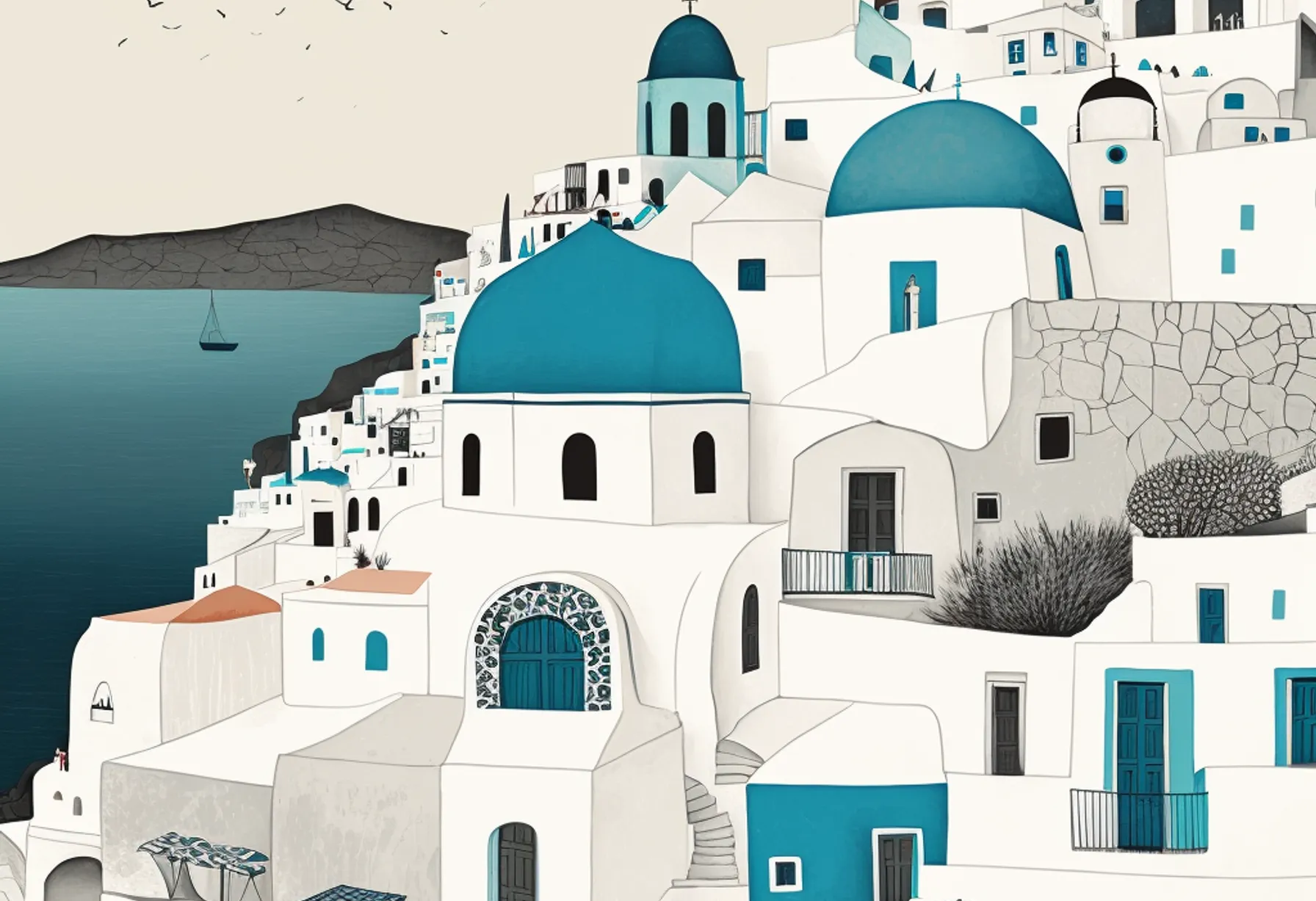The Cyclades, discover the most beautiful islands of Greece

The Meltemi stirs the sea, waves form, you find yourself in the Aegean Sea. You try to tack upwind, sometimes you have to come about. Whether you are in the wide Atlantic, the Mediterranean, or on another sea, you must take the wind into account when sailing. Not to mention that exploring the Cyclades inevitably involves making choices since the archipelago comprises 250 islands, islets, or rocky islets. You will sail in the company of playful dolphins with which you communicate by tapping on the bow.
Welcome to Greece, the cradle of our civilization that you have come to know through the serials of Hermes and the adventures of Ulysses. I suggest you look towards the islands with evocative names: Mykonos, Santorini, and Amorgos. They have left a mark on the minds of travelers and fueled the imagination of artists.
Mykonos, the art of the wind
For my part, I hold a tender memory of Mykonos. I was 4 years old when a stormy rain descended on the ferry hopping from island to island, so much so that I sought refuge under a merchant's tarp. The raindrops were as big as a fist, and the rain was surprisingly warm!
Even though those times are gone and Mykonos now welcomes the golden youth, a few windmills continue to spin their blades as they did 400 years ago. They symbolize the place just as much as the whitewashed houses with their azure blue frames.
Once, the small island that milled wheat for all of Greece, was prosperous. Besides the Little Venice, this lineup of colorful houses by the sea, treat yourself to an early morning yoga session at the Fanari lighthouse. Located at the end of a jetty, it resembles a bandstand or a small Greek temple.
But what is that oddly shaped church you see? Paraportiani! Comprising 5 chapels and topped with a dome, the Byzantine church is supported by an old gate of the ramparts. It's because Mykonos once had no fewer than 400 churches. You cannot leave Mykonos without experiencing its beaches; there are 20 of them! You will be impressed by this long stretch of dazzling white fine sand.
Some are conducive to relaxation like Capari, Agia Anna, or Agios Sostis. On the other hand, others are great for practicing water sports like wakeboarding, such as Kalafatis Beach. Others still are more festive, like Paradise Beach.
Santorini and its caldera
Going to Santorini means experiencing a change of scenery, however, avoid the peak season as the place is popular. The island, shaped like a caldera, faces an offshore volcano. If you do not wish to climb the 300 steps, take the cable car. The immaculate white houses of Oia are tiered on the mountain formed of lava.
The churches - also whitewashed - are recognizable by their wavy façades which incorporate a bell. They are topped with an impeccably blue dome. As you ascend, you realize how fascinating the view from the top must be.
At early morning or at dusk, the spectacle is quite different. The dark sea is barely discernible but the cliff is dotted with lights from the dwellings. Walking during the day along the alleys, you overlook private terraces with panoramic views and covered from the sun by a boat sail. Settle down as the sun sets on a rooftop terrace and sip vermouth accompanied by olives facing the ocean.
You can continue your evening by watching a classic movie outdoors; some bars offer this opportunity. Nonetheless, the most amazing thing remains to follow the ridge on a motorcycle to contemplate the high cliffs overlooking the sea, it is a stunning spectacle. Under a setting sun, the gigantic walls seem to advance into the sea.
Finally, do not miss the ruins of the archaeological site of Akrotiri which are particularly well highlighted. They contain very lively frescoes and without even realizing it, you become familiar with the “Minoan” digs
The civilization, named after King Minos who flourished in Crete and the Aegean Sea between 2700 and 1200 BC, was uncovered by archaeologist Arthur John Evans.
Revisiting the Big Blue in Amargos
The seasoned freediver, Jacques Mayol, spoke thus about his practice: “Man has archaic reflexes within him that allow him to reach deep into his genetic baggage and become amphibious. I’m not claiming that he will become a dolphin, but that man is more aquatic than he thinks.”
In 1988, the film directed by Luc Besson was a global success, and the dolphin-man contributed to the fame of the island. Furthermore, the easternmost Greek island can be explored along its many hiking trails protected by stone walls. If you are also a history enthusiast, you can combine your passions since there are 8 perfectly marked historical paths. Generally, Chora and its 500 souls in the low season is a delight with its small squares where restaurants are set up.
You will be able to indulge your taste buds with a goat and potato-based dish called patato. You will probably taste xerotigana, small pastries filled with goat cheese, or dotyri, goats marinated in olive oil unless you prefer the pastéli, honey nougats.
Once there, you will be very tempted to visit the monastery of Panaghia Chozoviotissa. Dating back to the 11th century, it is literally tied to the cliff some 300m above the sea. Your effort will be rewarded when you taste the loukoums and tea served at the top; you will have climbed all 300 steps nonetheless!
Moreover, the monastery sells organic products. Whether you are an experienced diver or just a beginner, the island has fabulous spots off the beaches of Psili Ammos and Levrossos.
Have a great trip and especially stray from the beaten path because “It is not down on any map, true places never are”, Herman Melville